Exploring the realm of mastering Keltner Channels Indicators unveils a trove of strategic insights that can elevate trading proficiency. By grasping the nuances of Keltner Channel Calculation and honing the skill to identify market turning points, traders can navigate the complex landscape of market dynamics with precision.
The top 10 tips for mastering Keltner Channels offer a roadmap to harnessing the power of this indicator effectively. As we delve deeper into these strategies, a world of potential for informed decision-making and improved technical analysis skills awaits.
Understanding Keltner Channel Calculation
When delving into the intricacies of Keltner Channel Calculation, it is essential to grasp the foundational principles guiding the construction of this technical indicator.
Keltner Channels consist of three lines: the middle line, the upper band, and the lower band.
The middle line is typically based on a 20-period Exponential Moving Average (EMA) to assess the trend.
The upper band is calculated by adding 2 times the Average True Range (ATR) to the EMA, while the lower band is derived by subtracting 2 times the ATR from the EMA.
These bands adjust dynamically based on market volatility, making Keltner Channels adaptive to changing price conditions.
Traders can fine-tune the indicator by adjusting the EMA period and the ATR multiplier to suit their specific trading strategies.
Understanding how these components interact is crucial for effectively utilizing Keltner Channels in technical analysis to identify potential entry and exit points in the market.
Identifying Market Turning Points
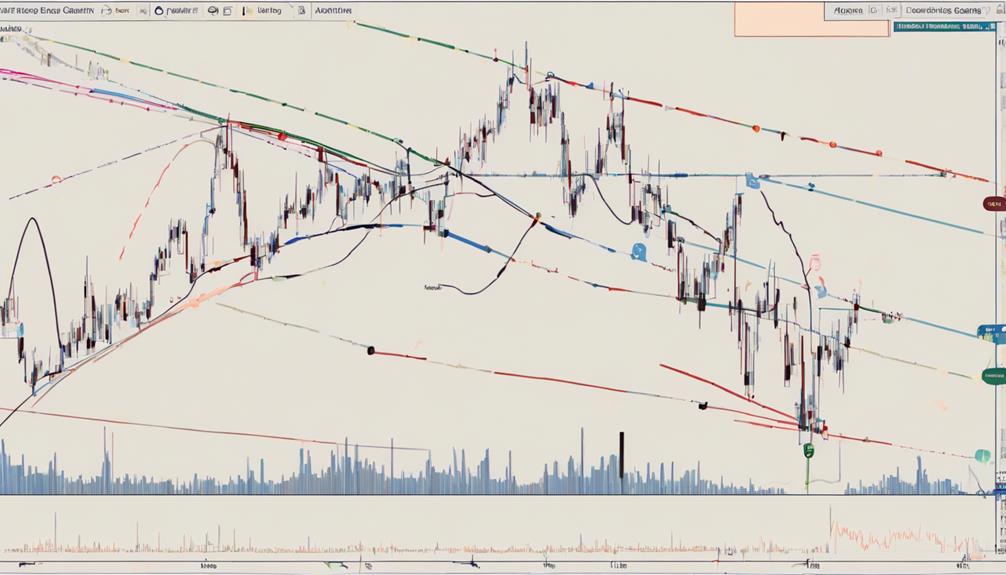
The identification of market turning points is crucial for traders seeking to capitalize on price reversals. By observing price action outside the Keltner Channel boundaries and near key support or resistance levels, traders can anticipate potential shifts in market direction.
Confirmation of reversal signals with price rejection at these levels adds a layer of accuracy to the analysis.
Spotting Trend Reversals
Spotting trend reversals, a crucial aspect of identifying market turning points, involves closely monitoring price movements outside the Keltner Channel boundaries for potential signals of changing market sentiment. When the price closes outside the Keltner Channel, it can indicate a possible trend reversal.
Reversals often coincide with key market structure levels, suggesting a shift in market sentiment. Confirming these signals with price rejection at support/resistance levels can enhance the accuracy of identifying trend reversals.
It is essential to pay attention to how the price behaves once it moves beyond the Keltner Channel boundaries, as this can provide valuable insights into potential market shifts. Successful identification of market turning points requires a combination of technical analysis tools and confirmation signals.
Timing Entry and Exit
Monitoring price movements outside the Keltner Channel boundaries and identifying key support or resistance levels can assist in timing entry and exit points, crucial for identifying market turning points.
Price closing outside the Keltner Channel serves as a signal for potential market reversals, often coinciding with these critical support or resistance levels. To enhance accuracy, confirm these reversal signals with price rejection at identified levels.
Understanding market structure and price behavior concerning the Keltner Channel is vital for predicting turning points. Combine the Keltner Channel with other technical indicators to further confirm market turning points.
Confirming Price Shifts
Identifying market turning points can be significantly enhanced by observing price movements outside the Keltner Channel and noting key support or resistance levels near potential reversal areas. When prices close outside the Keltner Channel, it can indicate a possible trend reversal.
Reversals often coincide with significant price movements beyond the channel boundaries, highlighting potential shifts in market sentiment. Confirming these turning points requires paying attention to how prices interact with support or resistance levels, as these zones often play a crucial role in signaling reversals.
Utilizing Keltner Channels for Trend Analysis
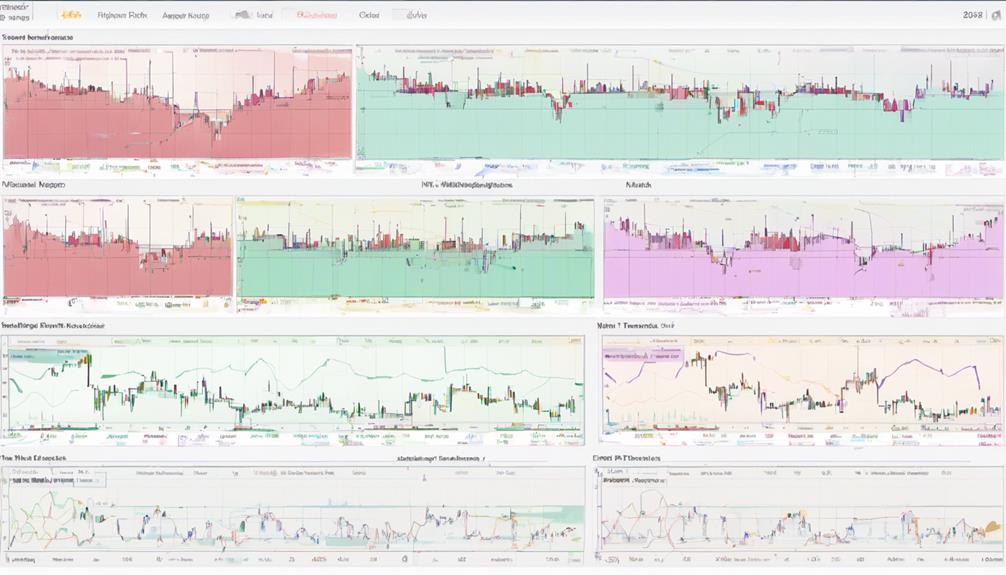
Keltner Channels offer traders a systematic approach for trend analysis. They utilize the middle line and the bands as key reference points. Observing the slope of the channels and interpreting the width provide valuable insights into the strength and direction of the trend.
Trend Identification Strategies
Utilizing the 20-period EMA within Keltner Channels enhances trend identification precision in market analysis. By confirming trends through the angle of the channel, traders can determine whether the market is moving upward or downward.
Keltner Channels provide dynamic support and resistance levels, aiding in trend identification. To strengthen trend analysis, traders often combine Keltner Channels with other trend-following indicators for a more comprehensive view.
Monitoring price behavior around the channel lines can help spot potential trend reversals early on. This strategic approach to trend identification using Keltner Channels equips traders with valuable insights into market movements, enhancing their decision-making process and overall trading performance.
Interpretation of Channel Width
The measurement of channel width in Keltner Channels serves as a valuable indicator of market volatility levels. Unlike Bollinger Bands, which use standard deviation, Keltner Channels incorporate average true range to determine the width of the channel.
A narrow channel in Keltner Channels suggests decreased volatility and a possible period of consolidation, indicating a potential trend reversal or sideways movement. Conversely, a wide channel indicates higher volatility, signaling the likelihood of strong price movements in the direction of the trend.
Mastering Keltner Channel Squeeze Signals
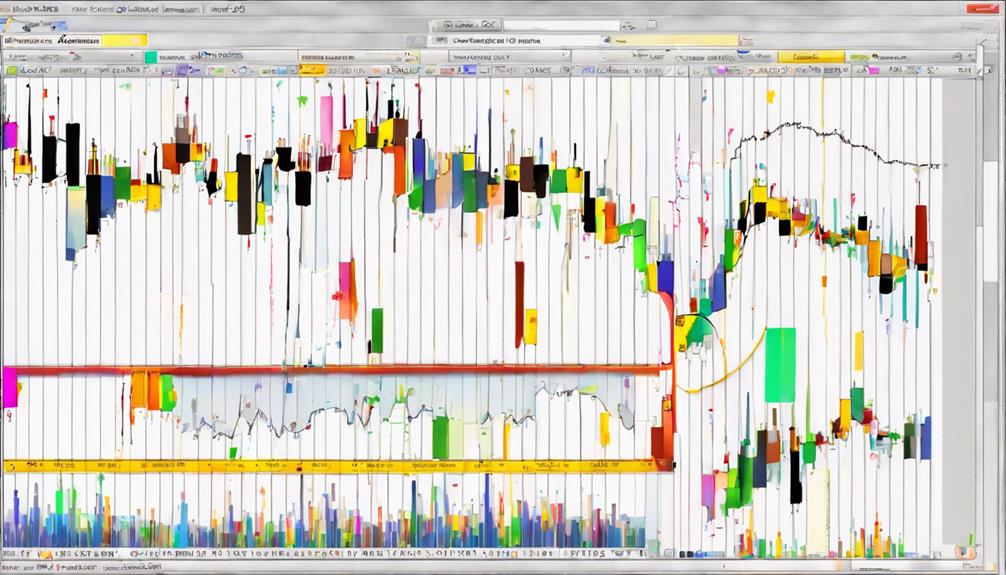
A key aspect of mastering Keltner Channel Squeeze signals involves recognizing the contraction of the upper and lower bands towards the middle line. This contraction signifies a period of low volatility and the potential for an upcoming breakout or significant price movement.
Traders often use the squeeze signal as a cue to anticipate volatility expansion. Confirmation of the squeeze signal can be enhanced by monitoring volume and other technical indicators to gauge the strength of the potential breakout.
Successfully interpreting the Keltner Channel Squeeze can provide traders with profitable trading opportunities by identifying moments of heightened market activity. By understanding the dynamics of the squeeze pattern and its implications for future price movements, traders can position themselves strategically to capitalize on the anticipated breakout.
Mastering the interpretation of Keltner Channel Squeeze signals is crucial for traders seeking to navigate low volatility periods and exploit potential market opportunities efficiently.
Enhancing Entry Timing in Trends
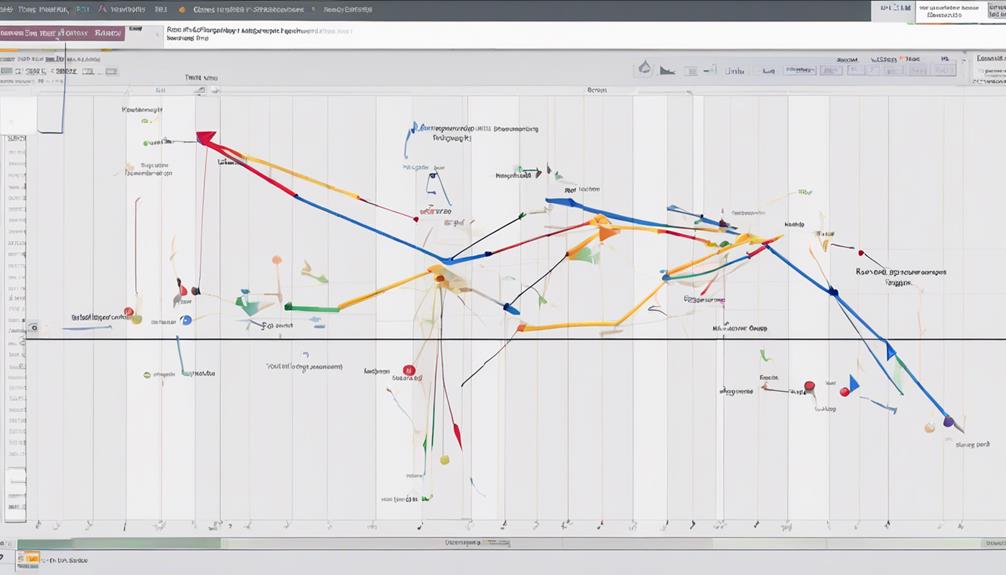
As traders aim to optimize their entry timing within trends, a strategic approach involves identifying opportune moments when price action aligns with the middle EMA line in a well-established trend. Entering trades when price bounces off the middle EMA line during a strong trend can offer favorable risk-reward opportunities.
Waiting for price to test the EMA line after a pullback can provide optimal entry timing, increasing the probability of a successful trade. It is essential to consider additional confirmation signals, such as candlestick patterns or other indicators, to enhance the validity of the entry decision.
Avoid chasing trades at the extremes of the Keltner Channels during trend continuation, as this can lead to entering positions too late in the trend. Using the EMA line as a guide for entry points in the direction of the overall trend can help traders achieve more consistent and profitable outcomes in their trading endeavors.
Avoiding Common Keltner Channel Mistakes
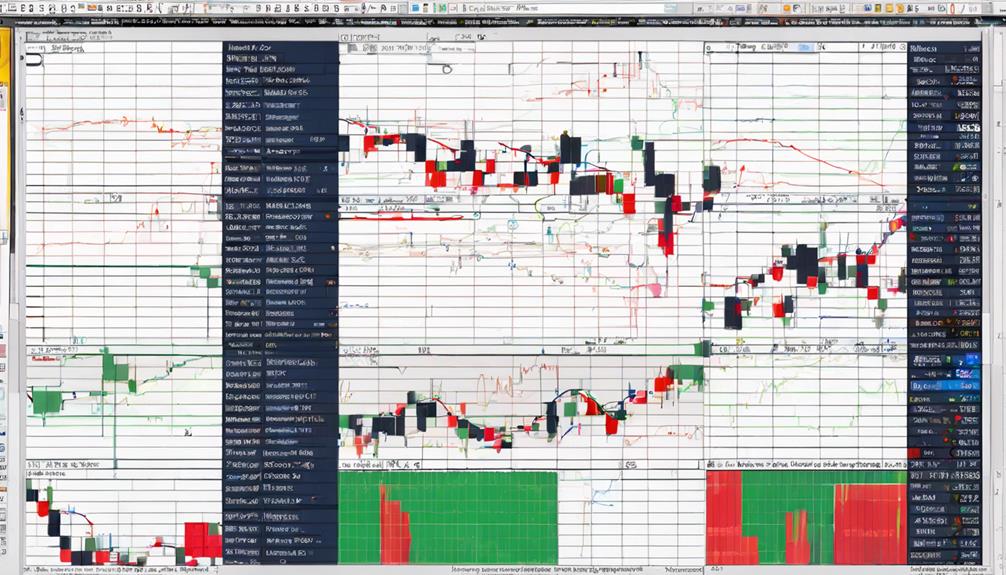
It is crucial to avoid relying solely on upper band touches for buy signals when using Keltner Channels; taking into account market context and seeking additional confirmations can improve decision-making accuracy.
In strong trends, prices can persist in overbought conditions, underscoring the need for supplementary signals to guide trading actions effectively.
Common Mistakes to Avoid
When incorporating Keltner Channels into your trading strategy, vigilance against common errors is paramount to maximize effectiveness and minimize risk. Traders must avoid trading solely based on upper band touches and instead consider overall market conditions for better decision-making.
In strong trends, prices can remain overbought, requiring additional confirmation signals before taking action. Combining Keltner Channels with other indicators can enhance accuracy and effectiveness in trading strategies.
It is essential to watch for price closing outside the Keltner Channel, as it can signal potential market turning points. Moreover, confirming reversal signals with price rejection at key support or resistance levels can significantly increase the accuracy of trading decisions.
Pitfalls in Application
Continuously monitoring and adjusting trading strategies when using Keltner Channels is crucial to sidestep the common pitfalls associated with their application. Avoid solely relying on upper band touches for buy signals; consider overall market conditions and additional confirmation indicators. Prices can remain in overbought conditions during strong trends, requiring supplementary signals for accurate trading decisions.
Combining Keltner Channels with other technical indicators enhances signal reliability and improves trading strategies. Look for price closing outside the Keltner Channel as a signal for potential market turning points. Confirm reversal signals with price rejection at key support or resistance levels to increase accuracy in predicting market shifts.
Improving Win Rate With Keltner Channels
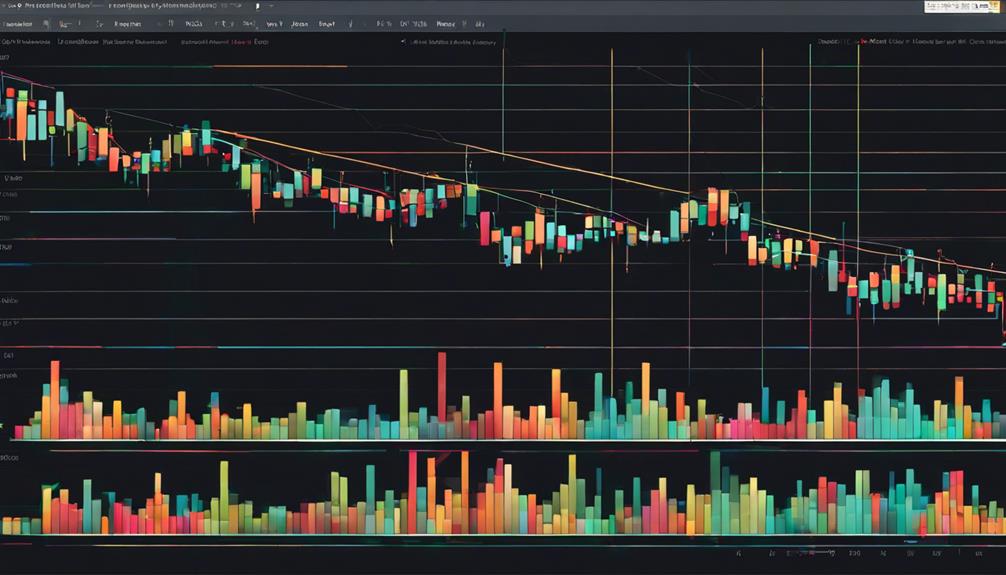
Enhancing trading success rates can be achieved through strategic utilization of Keltner Channels indicators. Keltner Channels are valuable tools for identifying potential trend reversals and breakout opportunities efficiently.
By combining Keltner Channels with other technical indicators, traders can receive confirmation signals that enhance trading strategies. Adjusting the Keltner Channel settings based on market volatility is crucial for improving signal accuracy and adaptability to changing market conditions.
When price approaches the Keltner Channel boundaries, traders should closely monitor price behavior for potential trade setups and effective risk management.
Implementing stop-loss and take-profit levels based on Keltner Channel signals is essential to optimize risk-reward ratios and trading outcomes. This approach helps traders manage their risk effectively while maximizing profit potential.
Leveraging Keltner Channels for Breakout Trades
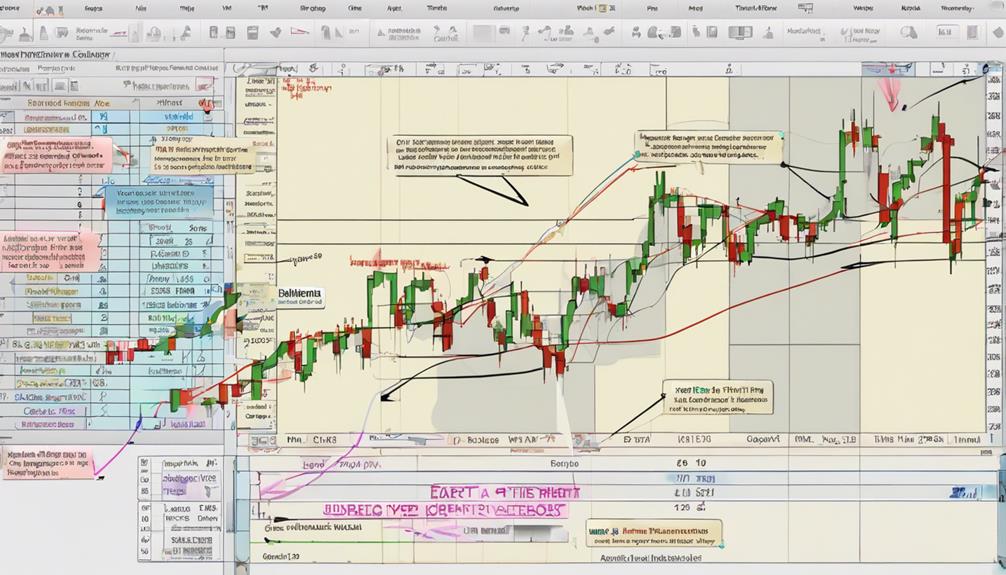
To capitalize on breakout opportunities in trading, leveraging Keltner Channels can provide valuable insights into identifying price movements beyond established boundaries. Breakout trades using Keltner Channels involve monitoring price movements that breach the upper or lower bands, signaling potential shifts in market sentiment.
It is crucial to confirm these breakouts with increased volume, as higher trading activity validates the strength of the price move. Additionally, traders can enhance their breakout strategies by incorporating other technical indicators or chart patterns that align with Keltner Channel signals.
Effective risk management is essential when executing breakout trades, requiring careful consideration of stop-loss placement based on recent price volatility and prevailing market conditions. Ultimately, Keltner Channel breakout trades aim to capture significant price movements while maintaining favorable risk/reward ratios.
- Identify price movements beyond upper or lower bands
- Confirm breakouts with increased volume
- Utilize other technical indicators or chart patterns
- Implement effective risk management through strategic stop-loss placement
- Aim for favorable risk/reward ratios
Effective Use of Keltner Channels in Trading
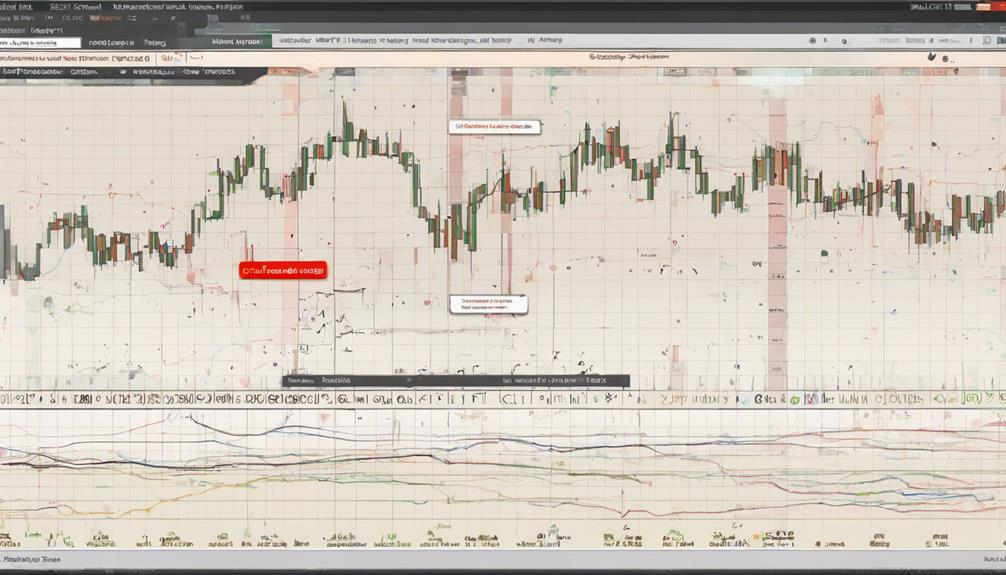
Efficient utilization of Keltner Channels in trading involves leveraging the middle EMA line for assessing short-term trends. This average acts as a guide, helping traders identify the direction in which an asset's price is moving within the channel.
By paying attention to the upper and lower bands, traders can determine potential overbought and oversold conditions. These bands, based on the Average True Range (ATR) volatility, offer insight into when prices may be stretched too far in either direction, indicating possible reversal points.
Day traders can utilize Keltner Channels effectively to align their trades with short-term trends, optimizing entry and exit points. The upper and lower bands also serve as dynamic support and resistance levels that adjust according to the asset's volatility, providing valuable information for setting profit targets and stop-loss levels.
Advanced Keltner Channel Trading Strategies
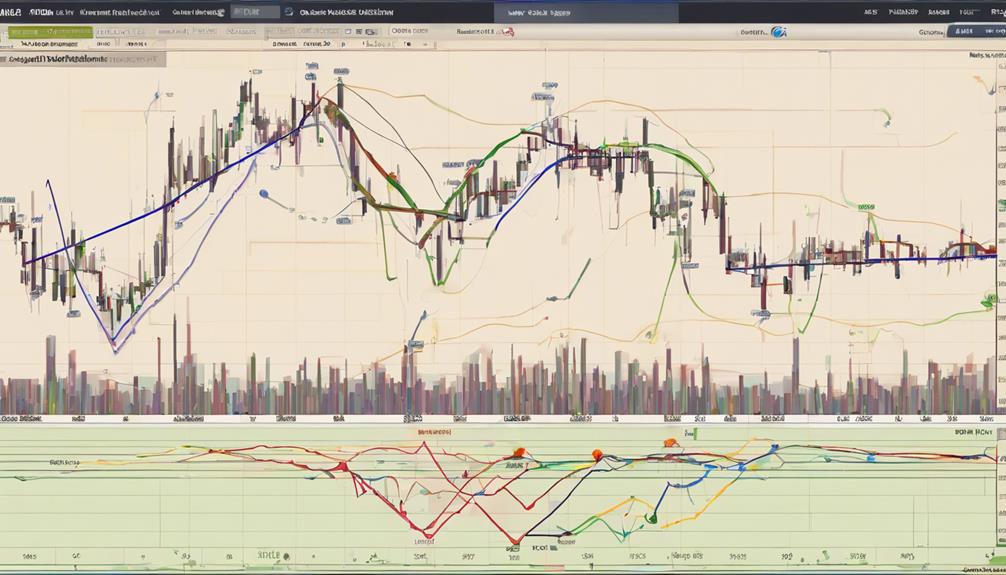
Building upon the foundation of effective Keltner Channel utilization, traders can enhance their strategies by incorporating advanced techniques that synergize with additional indicators and analysis methods. To elevate Keltner Channel trading to a more sophisticated level, consider the following strategies:
- Combine with MACD or RSI: Use these indicators in conjunction with Keltner Channels to validate signals and strengthen trading decisions.
- Utilize multiple timeframes: Confirm Keltner Channel signals across different timeframes to increase the accuracy of trade entries and exits.
- Incorporate Fibonacci levels: Identify key price levels for potential reversals or extensions by combining Keltner Channels with Fibonacci retracement and extension levels.
- Leverage volume analysis: Evaluate the strength of breakouts or pullbacks by analyzing volume alongside Keltner Channel signals.
- Validate with candlestick patterns: Use candlestick patterns in tandem with Keltner Channels to confirm potential entry and exit points, enhancing the overall reliability of your trades.
Can I Use These Guides to Improve My Understanding of Keltner Channels Indicators?
Absolutely! Utilize these informative guides to master Keltner Channels analysis techniques and gain a deeper understanding of this technical indicator. Enhance your skills and proficiency in utilizing Keltner Channels for improved trading strategies.
Frequently Asked Questions
What Is the Best Strategy for the Keltner Channel?
The best strategy for Keltner Channels involves utilizing a 20-period EMA and a 2x ATR multiplier to gauge price volatility and trend direction. Traders can adjust the ATR multiplier as needed and combine indicators for enhanced signals.
Is Keltner Channel Strategy Profitable?
Keltner Channel strategy can be profitable when applied diligently. Combining it with other indicators can enhance results. Success hinges on understanding market conditions, effective risk management, and disciplined trading. Consistency and patience are vital for long-term profitability.
What Setting Should a Keltner Band Be On?
The setting for a Keltner Channel typically includes a 20-period Exponential Moving Average (EMA) for the middle line and 2 times the Average True Range (ATR) for the upper and lower bands. Adjusting the ATR multiplier based on market conditions can help optimize sensitivity to price movements.
What Is the King Keltner Trading Strategy?
The King Keltner Trading Strategy combines Keltner Channels with other indicators to identify trend reversals and breakouts. Traders integrate moving averages for confirmation, aiming to improve trade accuracy by filtering signals and focusing on high-probability setups.
Conclusion
In conclusion, mastering Keltner Channels indicators requires a deep understanding of their calculation, application in trend analysis, and identification of market turning points.
By following the top 10 tips outlined in this article, traders can enhance their technical analysis skills and make informed trading decisions.
Utilizing Keltner Channels effectively can lead to improved entry timing, higher win rates, and successful breakout trades.
Stay focused, stay informed, and master the art of Keltner Channels for successful trading strategies.
